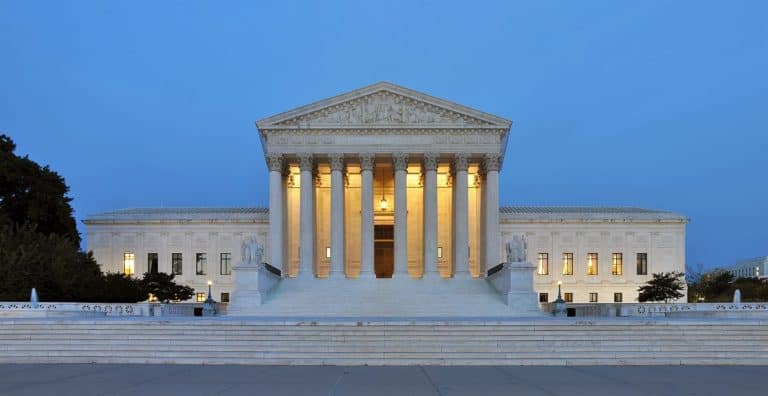Last week on the blog, we wrote about why the NLRB should withdraw the Hy-Brand decision (here and here)—in short, because a Board member who voted for the result, William Emanuel, should have recused himself (his former law firm represented one of the companies in the Browning-Ferris case). Hy-Brand overruled Browning-Ferris, thus reinstating a joint-employer standard under which it is more difficult to establish a joint-employer relationship. On Monday, the NLRB vacated Hy-Brand, following a determination by an internal ethics official that Emanuel’s participation was a conflict-of-interest, and that he should not have participated in the proceeding.
In an op-ed for the Atlantic, Derek Thompson argues that more immigration is the key to the economic growth President Trump seeks. The Trump administration’s latest budget projects 3% annual GDP growth through 2025. Thompson emphasizes that this level of GDP growth is “exquisitely rare” in developed countries (the average in the U.S. since the Great Recession has been 2%). More workers, according to Thompson, are the key to driving up productivity in an advanced economy. Because U.S. birthrates are in a “lull” (which Thompson recognizes might be consequent of things like gender equality), immigration is the remaining viable route to higher growth.
In the wake of the school shooting in Florida earlier this month, President Trump has advocated for arming teachers. What do teachers think of this? Some teachers’ associations and unions have since spoken out against the suggestion. The President of the National Education Association said that arming school staff was a proposition overwhelmingly rejected by parents and educators. The President of the American Federation of Teachers (AFT) said, “[t]eachers don’t want to be armed, we want to teach,” and questioned the practicality of a program that armed teachers.
Finally, the Supreme Court heard oral argument in Janus yesterday. The Washington Examiner, NPR, and SCOTUSblog, each covered the oral argument. Notably, Justice Gorsuch remained silent. As this coverage pointed out, because he is believed by many to be the determinative vote, oral argument provided little additional information about the likely outcome of the case.






Daily News & Commentary
Start your day with our roundup of the latest labor developments. See all
July 4
The DOL scraps a Biden-era proposed rule to end subminimum wages for disabled workers; millions will lose access to Medicaid and SNAP due to new proof of work requirements; and states step up in the noncompete policy space.
July 3
California compromises with unions on housing; 11th Circuit rules against transgender teacher; Harvard removes hundreds from grad student union.
July 2
Block, Nanda, and Nayak argue that the NLRA is under attack, harming democracy; the EEOC files a motion to dismiss a lawsuit brought by former EEOC Commissioner Jocelyn Samuels; and SEIU Local 1000 strikes an agreement with the State of California to delay the state's return-to-office executive order for state workers.
July 1
In today’s news and commentary, the Department of Labor proposes to roll back minimum wage and overtime protections for home care workers, a federal judge dismissed a lawsuit by public defenders over a union’s Gaza statements, and Philadelphia’s largest municipal union is on strike for first time in nearly 40 years. On Monday, the U.S. […]
June 30
Antidiscrimination scholars question McDonnell Douglas, George Washington University Hospital bargained in bad faith, and NY regulators defend LPA dispensary law.
June 29
In today’s news and commentary, Trump v. CASA restricts nationwide injunctions, a preliminary injunction continues to stop DOL from shutting down Job Corps, and the minimum wage is set to rise in multiple cities and states. On Friday, the Supreme Court held in Trump v. CASA that universal injunctions “likely exceed the equitable authority that […]